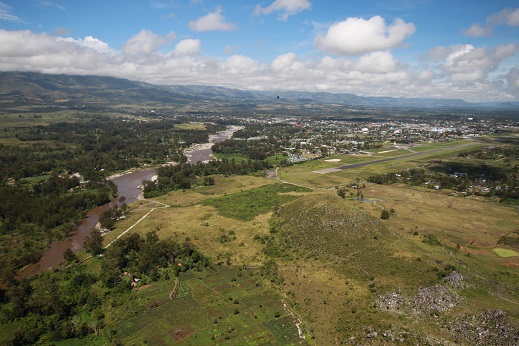HIV/AIDS is posing an ever greater threat to the health and welfare of people in the highlands of Papua
Antoine Lemaire and Carole Reckinger
Across the more than 17,000 islands of Indonesia, more than 380,000 people have been tested HIV positive (with a population of over 242 million). The worst affected region is the two most easternmost provinces Papua and West Papua, where a generalised epidemic is underway. With only 1.5 per cent of Indonesia’s population, the two provinces account for over 15 per cent of all Indonesia's new HIV cases in 2011. The HIV prevalence rate is 11 times higher than the national average and has reached 3.5 per cent. In 2006, AusAid expected 3.61 per cent of the population in Papua to be HIV positive by 2025. In fact it has reached this level more than ten years earlier than predicted. The highlands of Papua is one of the worst affected regions. Due to lack of awareness, poor health services, stigma and misinformation, the number of undetected HIV cases is thought to be many times the 2700 detected cases that were already detected by January 2013.
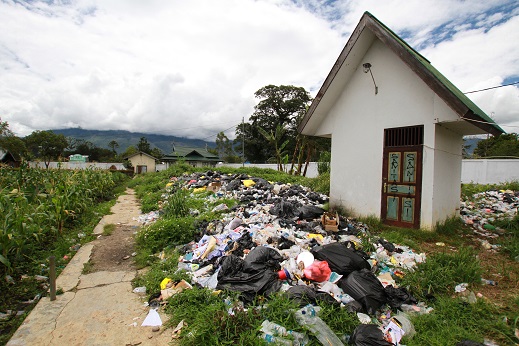
Rubbish, contaminated needles, blood packs and other highly hazardous waste lie unchecked next to the public hospital vegetable garden in Wamena. The poor standards or complete lack of health services and education throughout the region not only facilitate the spread of the disease, they also severely impede any efficient response to the epidemic.
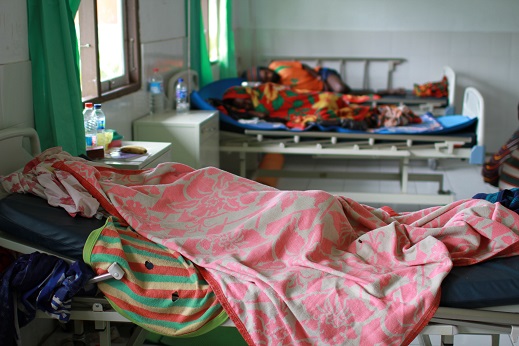
Magda (not her real name) (14) is lying in her hospital bed under her blanket. She has no appetite and sleeps most of the time. Every day she gets weaker. She died after nearly three months in hospital of AIDS related illnesses. A rising number of teenagers are infected with the virus.
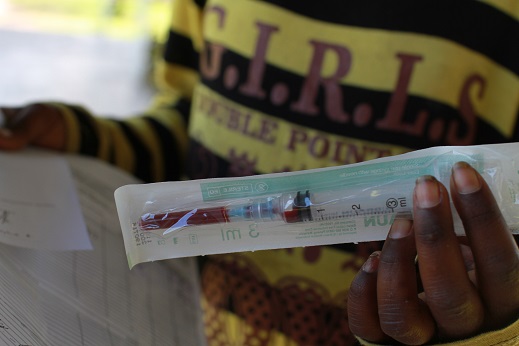
An eight-year old girl brings the blood of her 15-year old brother, who is dying of AIDS related illnesses in the hospital, to the laboratory. By the time she got there, all the blood had spilled out. Awareness about the virus is still very limited and the seriousness of HIV seriously underestimated. A lack of knowledge about the modes of transmission, coupled with the long running political conflict and the climate of mistrust and fear it has borne, has led to many misconceptions and a number of conspiracy theories. The suspicion that HIV has been introduced specifically to decimate the indigenous population is widespread.
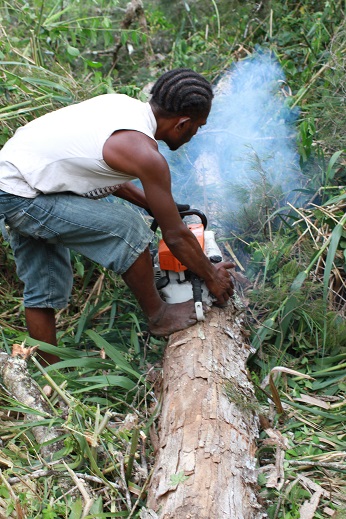
Benjamin (not his real name) tested HIV positive four years ago while studying outside Papua. He is taking his medicine regularly and is healthy. He is a valued member of the community, and has recently married. The couple are looking forward to having children. Apart from his parents, no one in the community, including his 18 year old wife are aware of his condition. Stigma is still very strong, in extreme cases taking forms such as threats and attempts to burn the patient alive. Some priests are also reluctant to conduct burial ceremonies for people who have died of AIDS, as they associate HIV infection with sin.
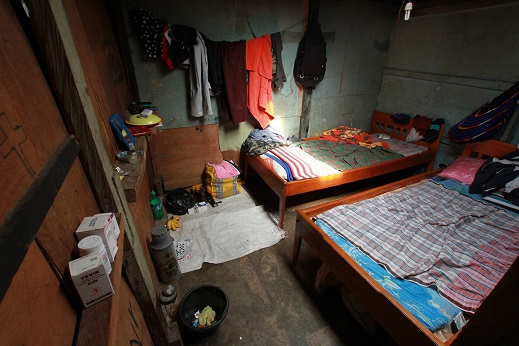
One of the rare shelters for people living with serious AIDS related illnesses. This particular shelter is run with the private money of three NGO workers. Many people live in rural areas only accessible by foot, light aircraft or helicopter, where no public services are available. Healthcare outposts have been built, but poor governance means staff are often absent. Rural inhabitants therefore have to walk, sometimes for days, to the closest hospital or rely on already overworked and underfunded local NGOs to provide helicopter transport. Many people who live far away from the city cannot afford to come to town every month to pick up their ARV medicine.
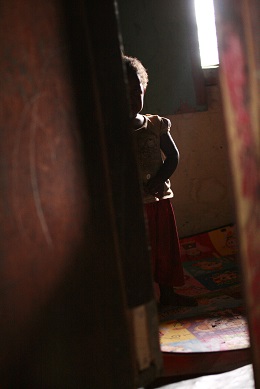
Lack of awareness about the disease means many infants are infected through childbirth or breastfeeding. There are currently 241 known cases of transmission from mother to child in both provinces.
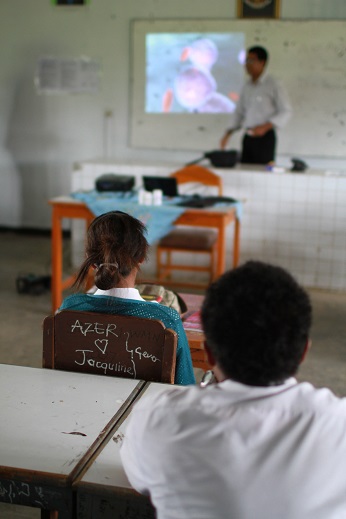
When senior high school students were asked about HIV/AIDS modes of transmission during one of the rare awareness-raising workshop by a local NGO, a majority of them believed that the virus was transmitted through mosquitoes and were not aware that no cure for the disease has yet been found. A worrying amount of youngsters also believed that the virus could be transmitted through kissing and shaking hands.
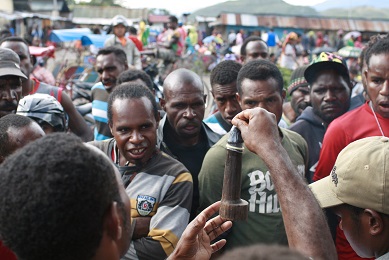
A member of a local NGO demonstrates the use of a condom during an HIV and STD awareness raising campaign at a local market. These kind of campaigns are still very rare.
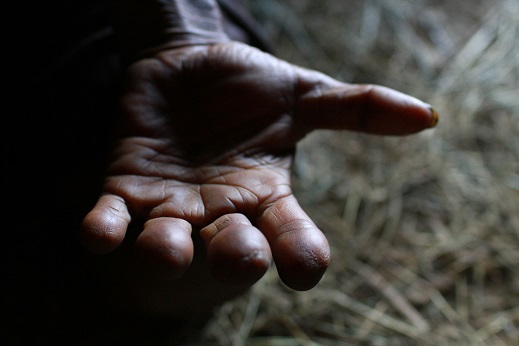
A woman's disfigured hands tell a long history of loss. Traditionally Dani women amputate a finger every time a close member of the family passes away. The fact that HIV infection is higher among ethnic Papuans is representative of socio-economic inequalities in the provinces. In order to decrease dissatisfaction with its rule, the Indonesian government has provided local governments in Papua with large amounts of money as part of ‘special autonomy’. Much of this money is spent on various programs without proper preliminary research or subsequent monitoring. The actual causes of the problem are rarely tackled. Although the provincial governments have made HIV testing and treatment free, many Papuans do not have access to health care or education and are not reached by awareness raising campaigns.
Carole Reckinger (carole81@gmail.com) has been interested in Indonesian and Papuan social and political issues since first visiting the archipelago over a decade ago while studying Indonesian and Southeast Asian studies at the School of Oriental and African Studies (SOAS). She has lived and worked in different parts of Indonesia, including Wamena and Jayapura.
Antoine Lemaire (antoinelemaire@gmail.com) studied Social Anthropology at SOAS. He has lived and worked in different parts of Indonesia and Papua. He is particularly interested in the impact of capitalism on material culture in indigenous societies.
Also by these authors in this edition, see 'Lives endangered'.

